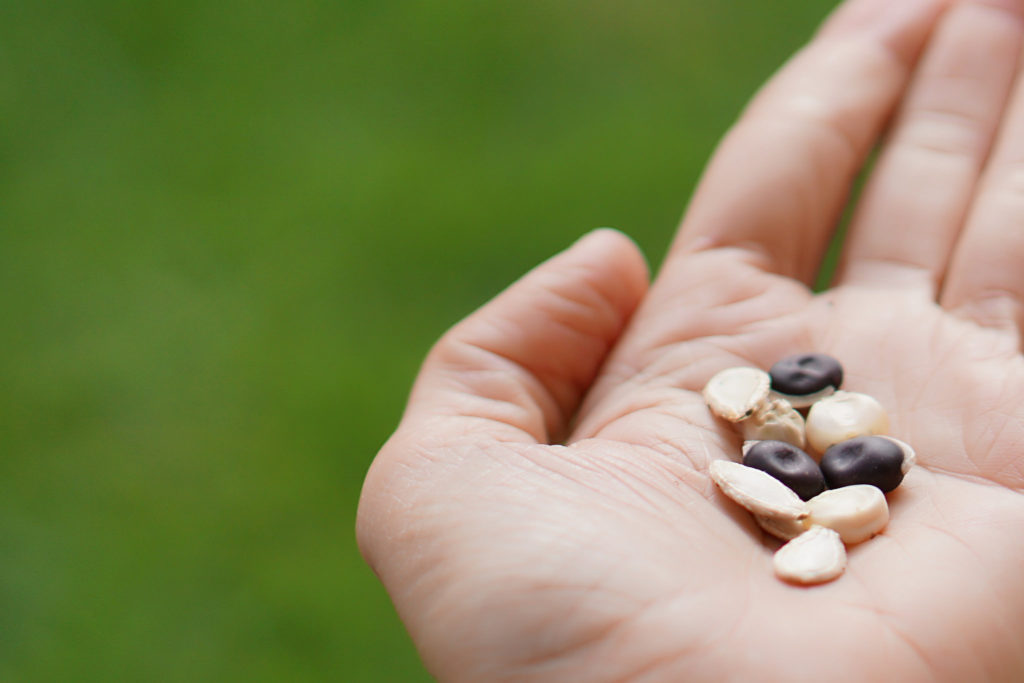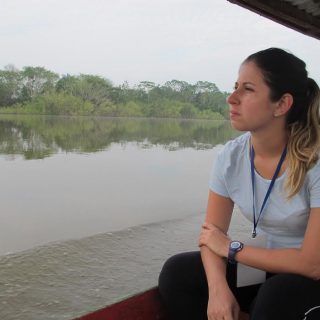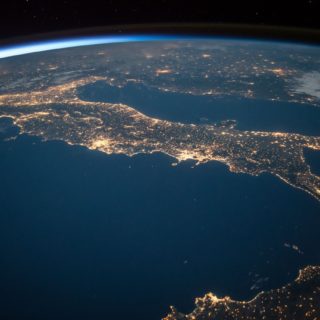João Baptista knows all about Non-Conventional Plant Foods (PANCs), vegetables with high nutritional value that many people believe to be weeds. Baptista, who is retired and lives in Chapéu Mangueira, a favela located on the south side of Rio de Janeiro, grows fruits, vegetables, and spices at home. “I have a 6 square meter vegetable garden, it’s not big,” he says. He shows off his crops: basil, coriander, lemongrass, lemon balm, PANCs such as serralha (Sonchus Oleraceus, also known as the sowthistle, is a type of dandelion found in northern Africa, Europe and Asia and South America), capuchinha (Tropaeolum Majusand is a South American edible flowering plant) and maria-sem-vergonha (Impatiens Walleriana is an African flower easily adaptable to the Brazilian soil). “Now,” Baptista interjects, “I’m about to reap a pumpkin.”
Baptista substitutes eggplant for red meat and makes salad with medicinal plants that he picks from the seedbed kept on his concrete rooftop. His close relationship with his small plantation makes the cultivating and harvesting of food seem affordable to anyone. And it is! The secret is to start small, with spices and vegetables, says biologist Danielle Souza.
Souza is an environmental education specialist and has learned much about traditional cultivations from João Baptista. She runs workshops with him for Favela Orgânica, an educational project promoting sustainable and affective cooking in Rio de Janeiro and elsewhere.
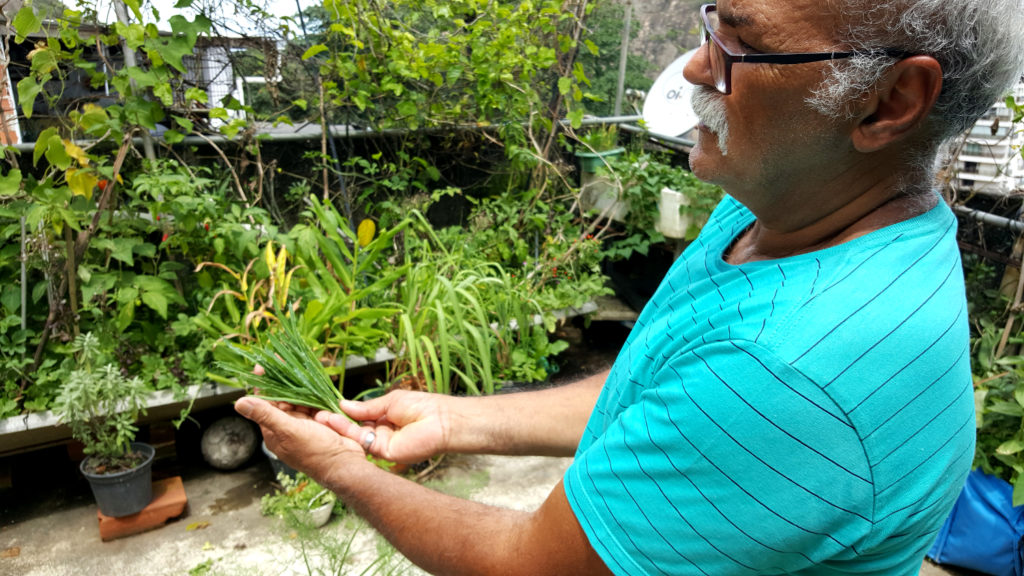
João Baptista reaps from his own vegetable garden all the necessary ingredients for his heart-friendly diet (Sandro Carneiro/Believe Earth)
According to Souza, the benefits of having a vegetable garden go beyond eating food that doesn’t poison oneself or the environment. “It’s a way of relieving stress, reducing the consumption of ultra-processed food, reducing the packaging waste that accompanies these products. The garden is also good for the household budget, because you don’t spend money on vegetables,” she says.
Cultivating a home garden also helps reduce food waste. Each year, 1.3 billion tons of food is wasted, according to the United Nations Food and Agriculture Organization (FAO). This food that does not reach anyone’s table consumes 250 trillion liters of irrigated water and 1.4 billion hectares of land and still generates 4.4 tons of carbon dioxide, according to FAO. Food waste is also, of course, a waste of money, globally about US$900 billion in losses.
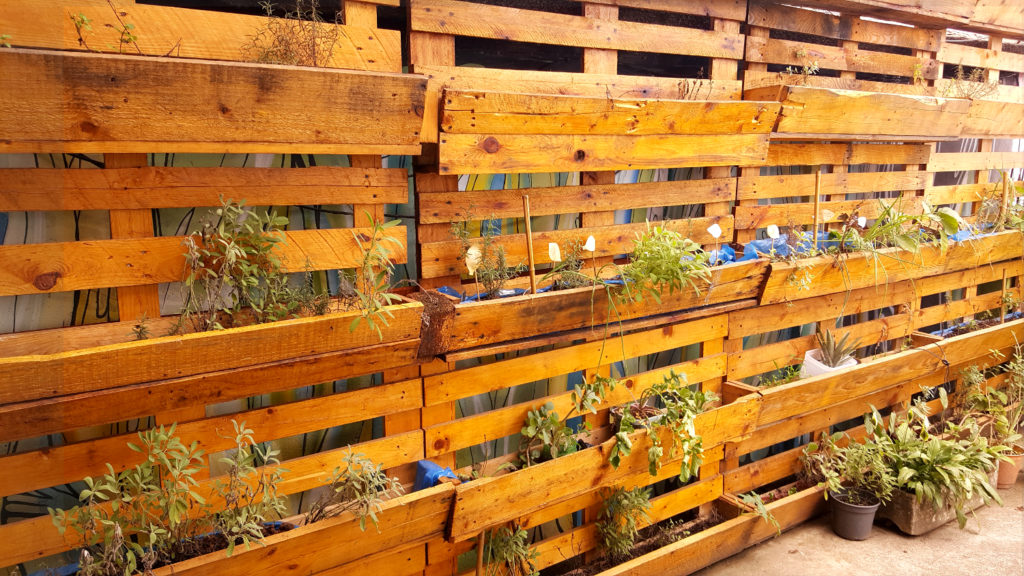
Free of pesticides, the home organic garden provides healthy food and benefits the environment (Sandro Carneiro/Believe Earth)
While you can also reduce food waste at the point of purchase, through conscious consumption, and in the food preparation process (by using stalks and peels in your cooking), the vegetable garden can also provide motivation for another vital way of curbing waste: composting inedibles into organic fertilizer.
The size and location of your seedbeds will depend on how much space you have, and what you would like to plant. You can start with some tea or spices in small pots, as Souza teaches.
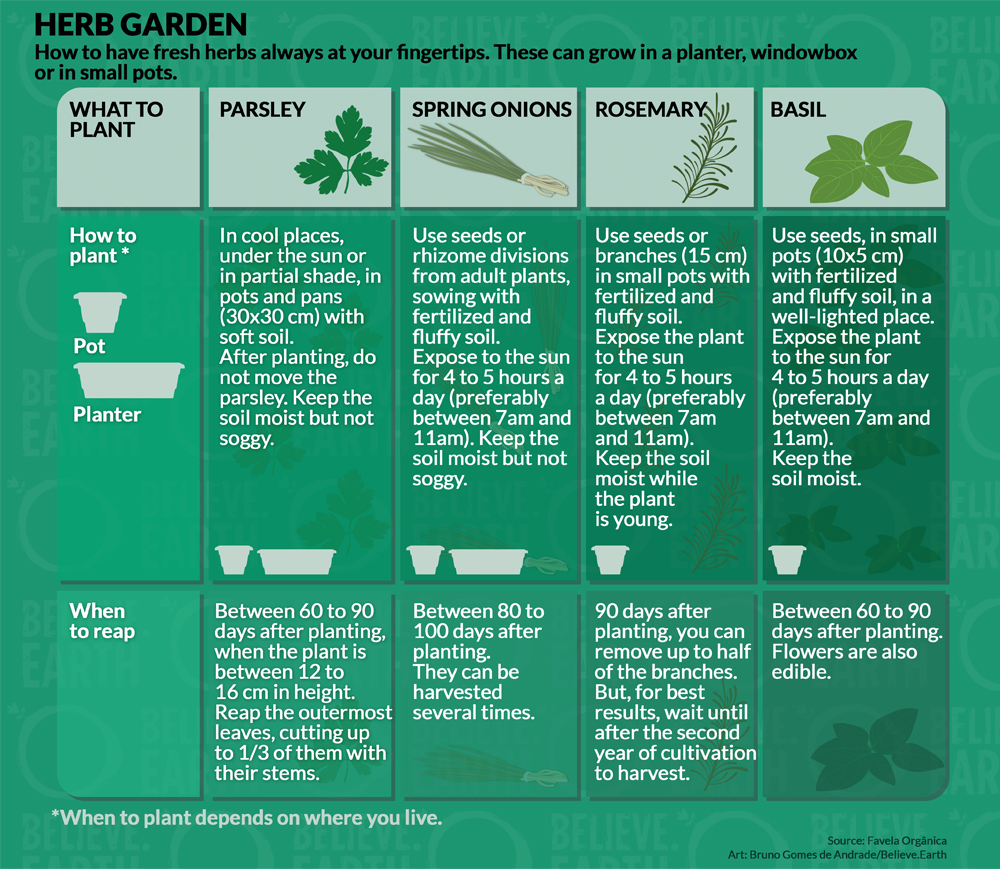
Another option is to plant bigger vegetables, such as carrots and collard greens, in buckets, cans or crates, remembering to leave room for the roots to grow. “The most amazing thing about a home garden is always having what you most like at your fingertips,” says Danielle.
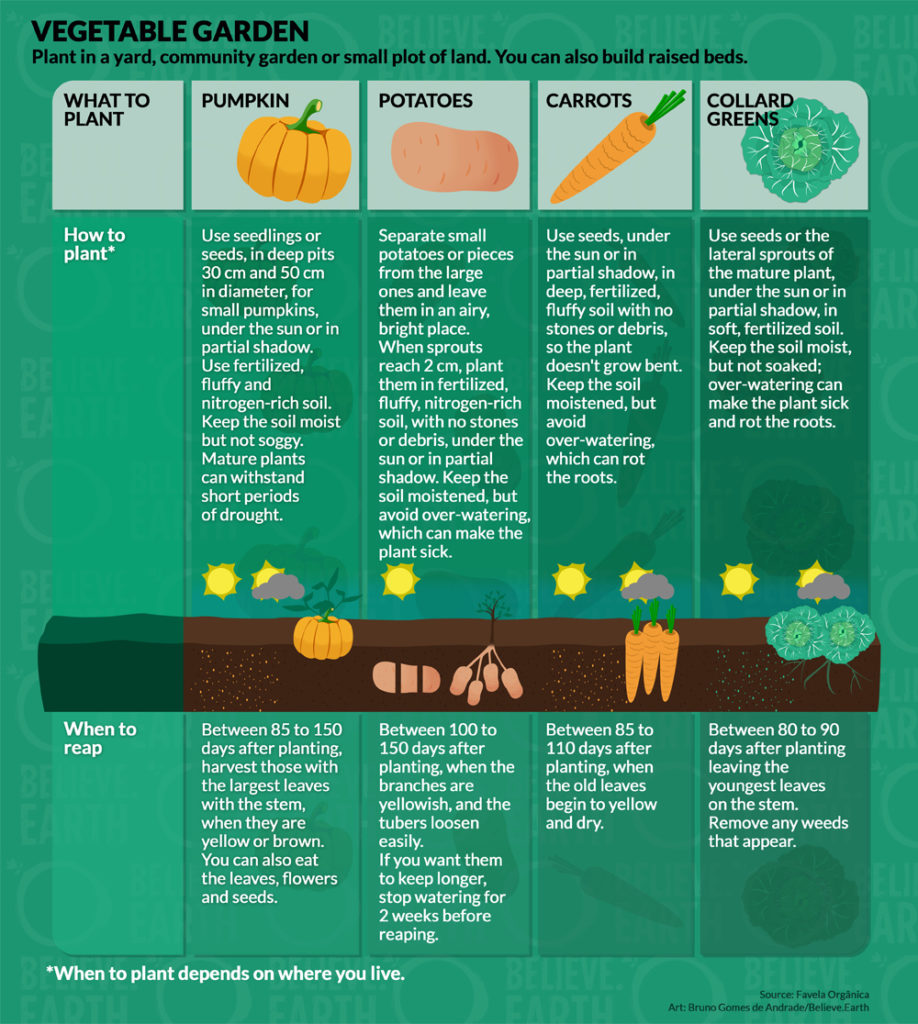
- Find out how much water it takes to produce various foods that we consume daily.
- This guide, created by the Barilla Center for Food and Nutrition (BCFN), recommends foods that are good for your health and less destructive to the environment.
- A study conducted in the United States detected the presence of pesticides in many foods consumed by Americans, even after washing and peeling. The complete list of 48 items can be seen here.
- Food waste is a complex problem with causes that vary according to country. For more information, take a close look at this FAO report here and here on losses incurred by food waste, its impact on nature and how to prevent it.
The Farmers’ Almanac offers extensive information on how to plant a home garden, including, if you live in the U.S. or Canada, an indispensable guide to planting times, which you can find here.
